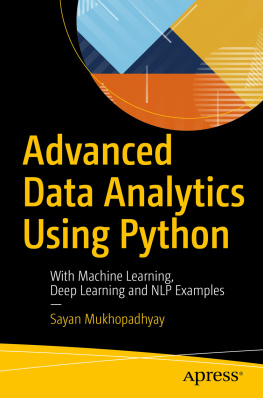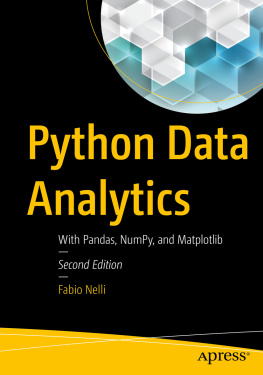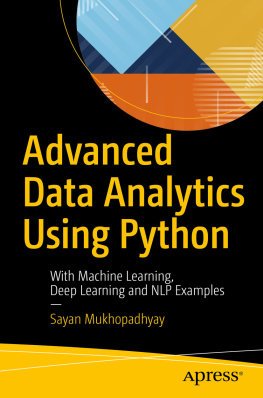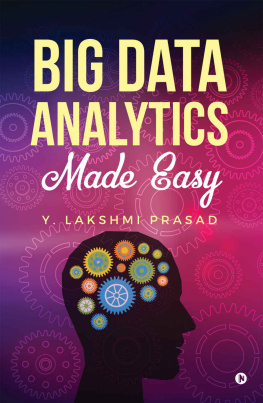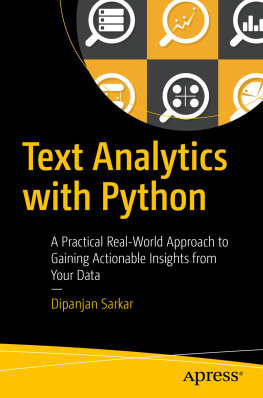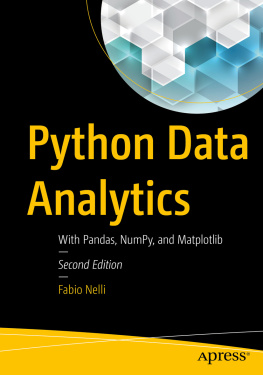Sayan Mukhopadhyay - Advanced Data Analytics Using Python: With Machine Learning, Deep Learning and NLP Examples
Here you can read online Sayan Mukhopadhyay - Advanced Data Analytics Using Python: With Machine Learning, Deep Learning and NLP Examples full text of the book (entire story) in english for free. Download pdf and epub, get meaning, cover and reviews about this ebook. year: 2018, publisher: Apress, genre: Computer. Description of the work, (preface) as well as reviews are available. Best literature library LitArk.com created for fans of good reading and offers a wide selection of genres:
Romance novel
Science fiction
Adventure
Detective
Science
History
Home and family
Prose
Art
Politics
Computer
Non-fiction
Religion
Business
Children
Humor
Choose a favorite category and find really read worthwhile books. Enjoy immersion in the world of imagination, feel the emotions of the characters or learn something new for yourself, make an fascinating discovery.
- Book:Advanced Data Analytics Using Python: With Machine Learning, Deep Learning and NLP Examples
- Author:
- Publisher:Apress
- Genre:
- Year:2018
- Rating:4 / 5
- Favourites:Add to favourites
- Your mark:
Advanced Data Analytics Using Python: With Machine Learning, Deep Learning and NLP Examples: summary, description and annotation
We offer to read an annotation, description, summary or preface (depends on what the author of the book "Advanced Data Analytics Using Python: With Machine Learning, Deep Learning and NLP Examples" wrote himself). If you haven't found the necessary information about the book — write in the comments, we will try to find it.
Gain a broad foundation of advanced data analytics concepts and discover the recent revolution in databases such as Neo4j, Elasticsearch, and MongoDB. This book discusses how to implement ETL techniques including topical crawling, which is applied in domains such as high-frequency algorithmic trading and goal-oriented dialog systems. Youll also see examples of machine learning concepts such as semi-supervised learning, deep learning, and NLP. Advanced Data Analytics Using Python also covers important traditional data analysis techniques such as time series and principal component analysis.
After reading this book you will have experience of every technical aspect of an analytics project. Youll get to know the concepts using Python code, giving you samples to use in your own projects.
What You Will Learn
Work with data analysis techniques such as classification, clustering, regression, and forecasting
Handle structured and unstructured data, ETL techniques, and different kinds of databases such as Neo4j, Elasticsearch, MongoDB, and MySQL
Examine the different big data frameworks, including Hadoop and Spark
Discover advanced machine learning concepts such as semi-supervised learning, deep learning, and NLP
Who This Book Is For
Data scientists and software developers interested in the field of data analytics.
Sayan Mukhopadhyay: author's other books
Who wrote Advanced Data Analytics Using Python: With Machine Learning, Deep Learning and NLP Examples? Find out the surname, the name of the author of the book and a list of all author's works by series.

